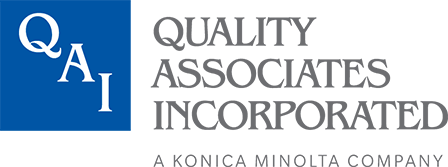Digitization is the process of converting analog information, such as paper documents, photographs, or audio recordings, into digital form. Organizations use digitization to preserve historical records, make information more accessible, and create new opportunities for learning and discovery.
Because scanners have become a valuable tool for home projects like scanning boxes of photos or the content of family file cabinets, many organizations mistakenly believe that a large-scale digitization project will also be easy. However, these projects typically digitize millions or even billions of documents, often in wildly varying formats and quality. The scale of these projects can make them complex and challenging. With increasing frequency, many government and private organizations are turning to service providers with the skills and experience necessary to complete large-scale digitization projects successfully.
New NARA/OMB regulations released in 2023 highlighted the need for specialized digitization expertise. While these new regulations only apply to permanent federal records, these requirements will likely spread to state and local government and private sector organizations, especially in highly regulated sectors. This page highlights many of the core NARA requirements for digitizing records.
The new regulations require federal agencies to digitize all permanent records in a way that ensures their long-term preservation. The new regulations quantitatively define image and image process quality, a significant change from older quality concepts based on how a document “looks” or the settings (like dots per inch) used when someone originally scanned it.
Complying With Regulations
The NARA/OMB regulations significantly overlap with FADGI (Federal Agencies Digital Guidelines Initiative) guidelines, which seek to define quantifiable image quality measures. The original impetus for FADGI came in 2007 when federal government agencies began a collaborative effort to articulate a “common sustainable set of technical guidelines, methods, and practices for digitized and born-digital historical, archival, and cultural content.” This effort led to creating FADGI standards—a four-star ranking system for image quality.
The new regulations require that organizations be able to produce images consistent with FADGI 3-star image quality guidelines and be able to document and audit that process. The ability of scanners — especially older ones — to produce such images is not a given.
Understanding and meeting these requirements is a complex matter. QAI is one of only a few organizations in the country that understand the implications of the new requirements for organizations conducting large-scale digitization of documents.
Implementing a Large-Scale Digitization Project
If you are considering undertaking a large-scale digitization project, it is essential to take the time to address all the issues involved. Doing so can increase your chances of success and make a lasting impact. These include:
- Laws and regulations. If you are a federal agency, how will you incorporate the new NARA digitization requirements into your plan?
- The scope of the project. What is the size of the collection that you need to digitize? What types of documents are included in the collection?
- The resources required. How much time and money will the project require? What equipment and software will you need?
- The technical challenges. What are the challenges involved in digitizing the documents in your collection? Do you need to remove staples or paper clips? Do you need to repair damaged documents?
- The legal and ethical issues. What are the legal and ethical implications of digitizing your collection? Do you need to obtain permission from the copyright holders of the documents? Do you need to protect the privacy of the individuals mentioned in the documents?
- The management and planning of the project. How will you manage the project? How will you track progress? How will you communicate with stakeholders?
Understanding Digitization Standards
Private organizations need to understand the implications of the new NARA/OMB digitization standards. Given the absence of other quantitative measures of image and image process quality, some private sector organizations may defer to the new federal standards. Secondly, there are a host of other laws that apply to private sector records, depending on your industry sector. For example, the following laws apply to managing records in the financial services sector:
- Sarbanes-Oxley Act of 2002 (SOX): SOX requires publicly traded companies to maintain accurate and complete financial records.
- Financial Services Modernization Act of 1999 (Gramm-Leach-Bliley Act): GLBA requires financial institutions to protect the privacy of their customers’ personal information.
- Fair Credit Reporting Act (FCRA): FCRA regulates the collection, use, and disclosure of consumer credit information.
- Fair Debt Collection Practices Act (FDCPA): FDCPA prohibits debt collectors from using abusive or deceptive practices.
- Consumer Financial Protection Act (CFPA): CFPA protects consumers from unfair, deceptive, or abusive practices in the financial services industry.
Partner with US For Your Large-SCale Digitization Project
Large-scale digitization can yield enormous cost, efficiency, and process benefits to an organization. Plans to digitize core processes are much more likely to succeed with digitization. So, start small and only try to digitize your entire collection a bit at a time; begin with a small pilot project to test your processes and procedures. And get help from experts. Companies like QAI specialize in effortless digital conversion and offer cutting-edge document and records management solutions.
[Written by a human with the assistance of Google Bard.]
Reach out today to see how we can help: 410-884-9100 or email us at info@qualityassociatesinc.com.


